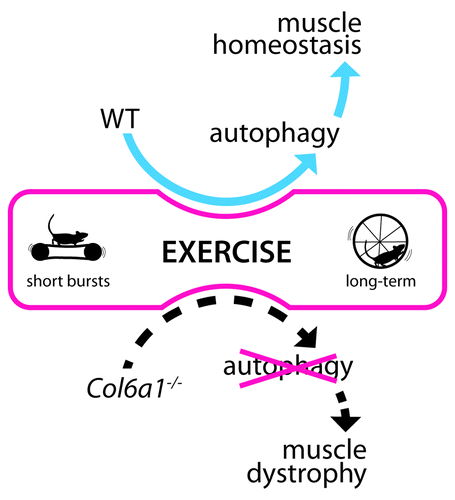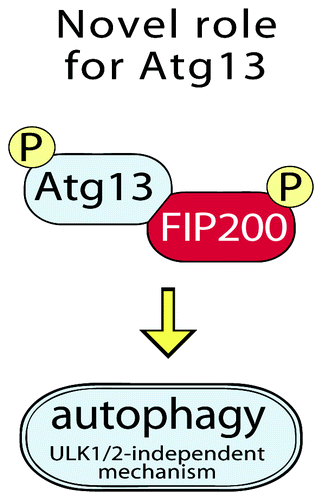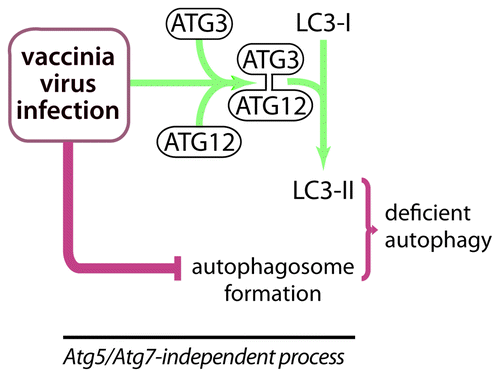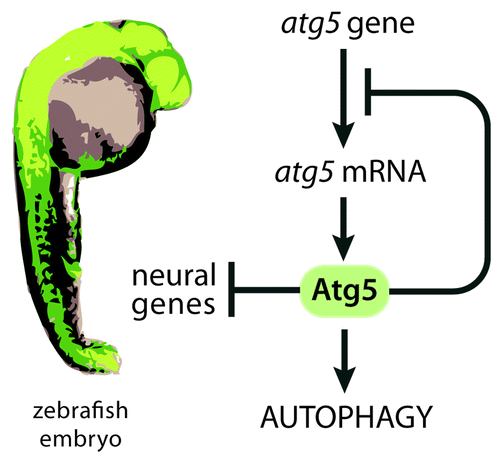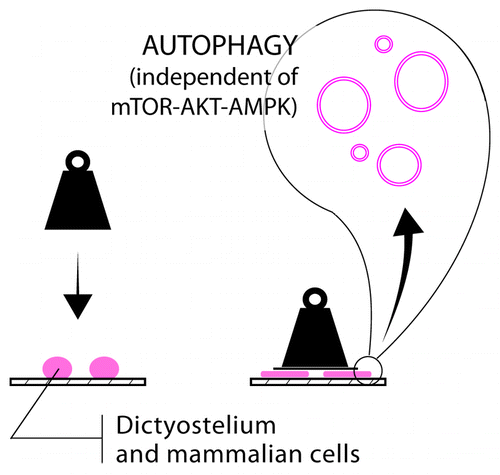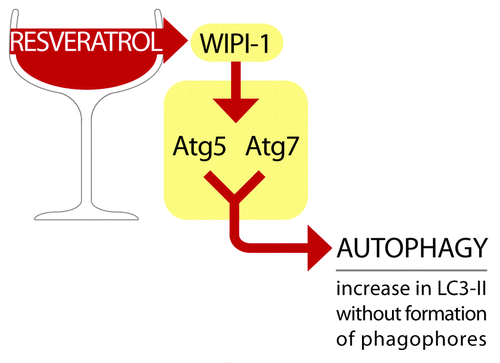1. Physical exercise stimulates autophagy in normal skeletal muscles but is detrimental for collagen VI deficient muscles
pp. 1415–23
P. Grumati, L. Coletto, A. Schiavinato, S. Castagnaro, E. Bertaggia, M. Sandri and P. Bonaldo
Multiple skeletal muscle myopathies were linked to mutations in extracellular matric protein collagen VI. Later reports noted impaired activation of autophagy in collagen VI-deficient mice. Paolo Bonaldo’s group, in this study (see editorial and basic brief report by Grumati et al. in this issue), hypothesized that reactivation of autophagy by exercise might improve mitochondrial biogenesis and ultimately muscle homeostasis. According to the authors, long-term and short bursts of exercise induce autophagy in normal muscle. Unlike WT, collagen VI-deficient mice, Col6a−/−, fail to activate autophagy in response to exercise and display severe muscle dystrophy.
2. Atg13 and FIP200 act independently of Ulk1 and Ulk2 in autophagy induction
pp. 1424–33
S. Alers, A.S. Löffler, F. Paasch, A.M. Dieterle, H. Keppeler, K. Lauber, D.G. Campbell, B. Fehrenbacher, M. Schaller, S. Wesselborg and B. Stork
Much of the early knowledge of autophagic regulation was obtained via manipulations of nutrient status in biological systems. Under nutrient-rich conditions, active mTORC1 inhibits the key complex of autophagic machinery, ULK1/2-ATG13-FIP200, through phosphorylation of ATG13 and ULK1/2. During starvation, this repression is lifted, allowing ULK1/2 to induce translocation of the > 3 MDa complex—ULK1/2-ATG13-FIP200—to phagophore assembly sites. Thus, ULK1/2 is viewed as indispensible for autophagy induction in most systems. Alers et al. in their basic brief report provide evidence that shifts the focus from ULK1/2 to ATG13. Researchers show that double knockout of ULK1 and ULK2 in a chicken lymphocyte B line (DT40) has no significant effect on autophagy, whereas ATG13-deficient cells severely lack basal and starvation-induced autophagy.
3. Vaccinia virus leads to ATG12-ATG3 conjugation and deficiency in autophagosome formation
pp. 1434–47
J.G. Moloughney, C.E. Monken, H. Tao, H. Zhang, J.D. Thomas, E.C. Lattime and S.V. Jin
During host-pathogen interaction, autophagy functions as a line of defense against infectious agents such as bacteria and viruses. Moloughney et al. note the massive accumulation of LC3-II in response to vaccinia virus infection, which might be suggestive of induction of protective autophagy. Interestingly, the generation of LC3-II was independent of the conventional ATG5/ATG7-mediated lipidation, but instead required conjugation of ATG3 with ATG12. These events were not paralleled by autophagosome formation under basal or amino acid starvation conditions, and did not benefit viral production. The authors suggest that vaccinia virus abolishes autophagic formation in infected cells via a novel unconventional mechanism.
4. Expression pattern and functions of autophagy-related gene atg5 in zebrafish organogenesis
pp. 1514–27
Z. Hu, J. Zhang and Q. Zhang
In this study, Hu et al. propose a novel function for Atg5 in organogenesis and neurogenesis in particular. Using the zebrafish model the authors demonstrated that Atg5 is required for normal brain and body development. Additionally, Atg5 was shown to control several neural genes: gli1, huC, nkx2.2, pink1, β-synuclein, xb51, and zic1. The authors also describe a new mode of Atg5 self-regulation via a negative feedback loop targeting its own transcription.
5. The induction of autophagy by mechanical stress
pp. 1490–99
J.S. King, D.M. Veltman and R.H. Insall
Responsive to a multitude of stimuli, autophagy is rarely studied in the context of mechanical stress. This timely study by King et al., sheds light on mechanical stress-induced autophagy. The authors developed a new system where pressure in the form of weight disks is applied to cells in culture dishes. Data obtained using two model systems, soil-borne amoeba (Dictyostelium) and mammalian breast cancer cells (MDA-MB-231), suggest that mechanical stress-induced autophagy is mTOR-AKT-AMPK-independent.
6. Resveratrol-mediated autophagy requires WIPI-1 regulated LC3 lipidation in the absence of induced phagophore formation
pp. 1448–61
M. Mauthe, A. Jacob, S. Freiberger, K. Hentschel, Y.-D. Stierhof, P. Codogno and T. Proikas-Cezanne
In their previous paper, Proikas-Cezanne’s group identified the human WIPI protein family. They reported that a specific member of the family, WIPI-1, binds PtdIns(3)P and gets incorporated into the newly formed autophagosomes. In their current report, Mauthe et al. discovered that effects of WIPI-1 upstream of ATG5 and ATG7 are required for LC3-II accumulation during autophagy mediated by reseveratrol, an antioxidant agent found in red wine.
